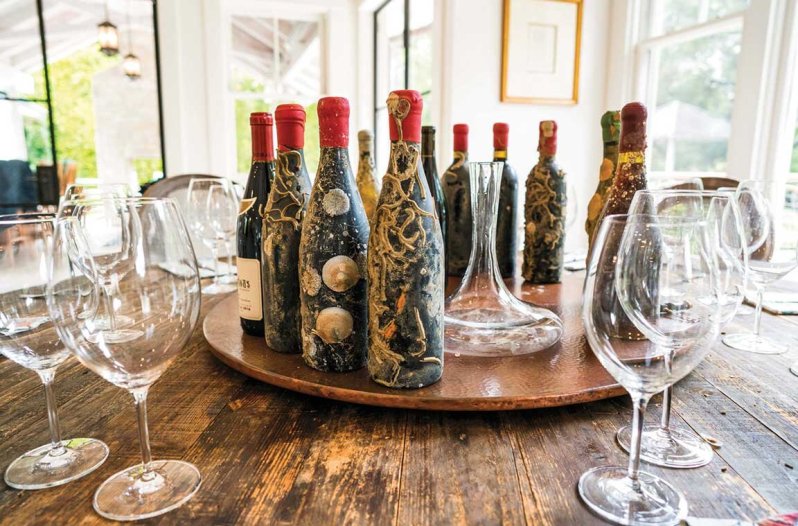
Sometimes, when you come up with an idea that feels unique, smart, and exciting, you scratch your head and wonder why nobody else thought of it before. While sometimes this is because you actually came up with something nobody else has ever thought of, the other option is that others have thought of it but realized that it was a terrible idea and moved on to something else. A recent story involving California wine aged underwater firmly fits into the latter category. Yes, you read that right: wine aged underwater. Not in a cave, a barrelhouse, or even someone’s dank, dark basement, but underwater. While this might seem like an ingenious idea for wine aging, it’s really not. Especially if you don’t get approval before doing so.
The story behind Ocean Fathoms
It all started when a California-based wine company called Ocean Fathoms decided that the waters of the Santa Barbara Channel were a good place to age its wine. Back in 2017, Ocean Fathoms submerged its wine in specially designed crates. The wine spent a whole twelve months aging on the bottom of the channel. The bottled wine was sold for a staggering $500 per bottle when it was done maturing. That seems all well and good, right? Actually, according to multiple government organizations, it most certainly wasn’t.
Apparently, the folks at Ocean Fathom, believing that they came up with a million-dollar idea, didn’t think of a few basic things in the process. First, they failed to get the proper permits or even check with the California Coastal Commission or any of the other organizations trusted with protecting the California coast. On top of that, they didn’t even get a business license before they sold the wine.
Ocean Fathoms was collecting taxes on the purchased bottles without paying the taxes to the state of California. That’s a big no-no in the alcohol game. Add to that, it was determined that the wines weren’t even fit for human consumption, according to the U.S. Food and Drug Administration.
As a result of angering pretty much every organization in the state in charge of water and alcohol, the Bureau of Alcoholic Beverages seized around 2,000 bottles and promptly had them destroyed at a wastewater treatment plant.
The company’s founders then pled guilty to a slew of misdemeanors for selling alcohol without a license, discharging material into U.S. waters, and aiding and abetting investor fraud (among other charges).
To add to all of this, it wasn’t even an original idea. Wineries in France, Croatia, and various other places have aged their wine underwater. The major difference? They actually got approval before they did it.
There is a moral to the story, though. The next time you come up with a seemingly life-changing idea, one that’s so spectacular that there’s a chance nobody else has come up with it, stop for a moment and ask yourself why. At the very least, find out if your idea is legal before you get started.



